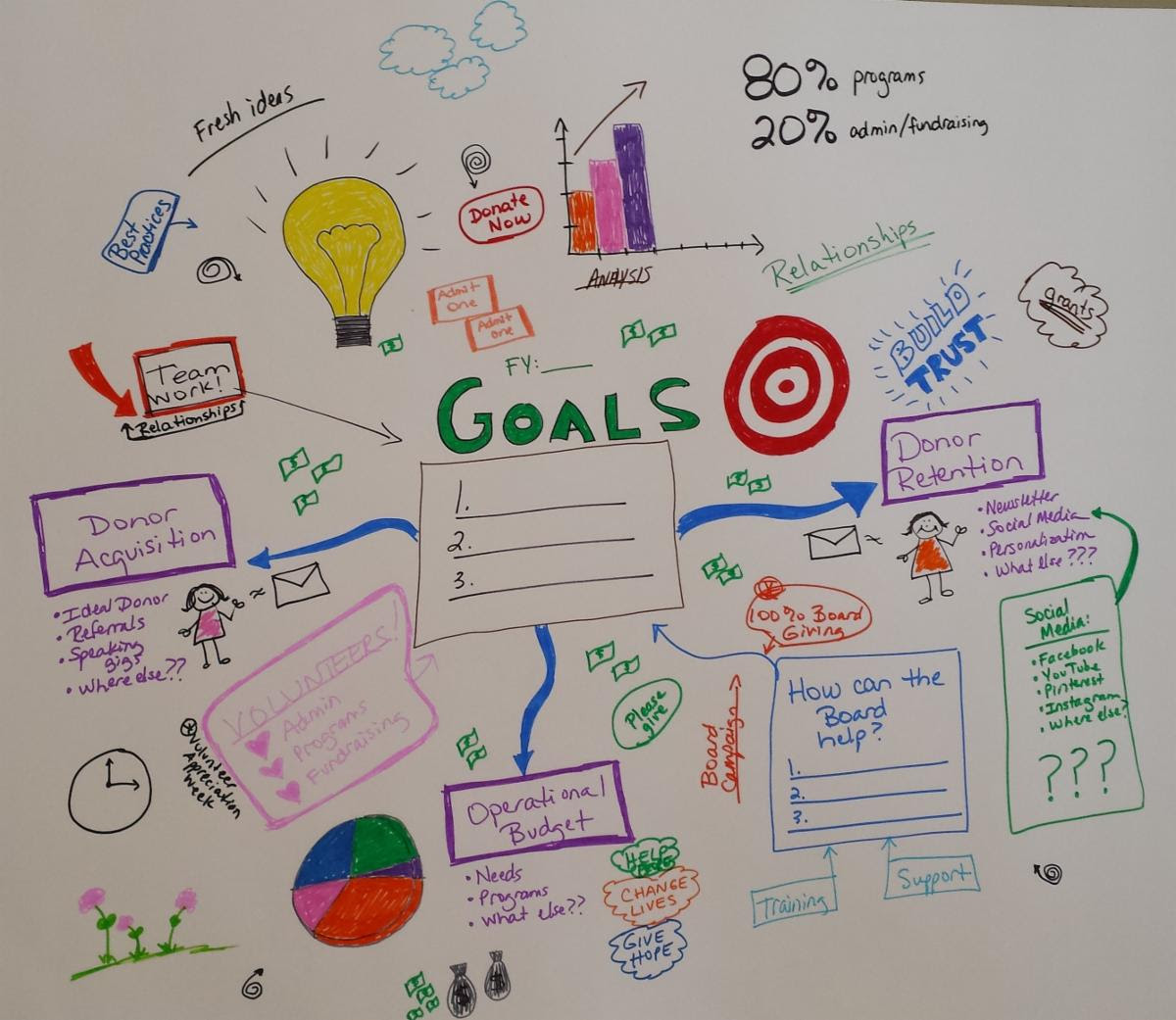 A fundraising plan changes your likelihood of success.
A fundraising plan changes your likelihood of success.
I can’t think of any big, successful nonprofit that got to where they are now without a plan.
Having a written fundraising plan moves you from being reactive to proactive which keeps you moving purposefully toward your goals.
A plan can keep you safe from shiny ball syndrome, a condition that affects thousands of people, leading them to chase after the latest, greatest thing instead of focusing on what’s proven to work.
For a small or new nonprofit, a plan is critical. You don’t have time to guess when you’re trying to change lives.
Most people get hung up thinking they need more information before they can plan. Or they want the perfect template because their plan needs to be done right or not at all. Or maybe they think if they create a plan and put it in writing, it’s carved in stone and can’t be changed.
These are all excuses. And can seriously derail a nonprofit’s growth, putting them on the wrong path or even in the ditch.
So, to stay on the path to success, every small nonprofit needs a plan for fundraising.
That plan must address the what, why, who, when, and how much for each fundraising activity included in the plan. The more details you include in the plan, the easier it is to get others on board with it, and the easier it is to execute.
Tips for being a fundraising planner

2. Don’t copy what everyone else is doing. Choose fundraising strategies based on what fits your needs and strengths. Pick fundraising activities because they’ll be fruitful and move you closer to your goals, not because they seem to work for the nonprofit down the street. Unless you have inside information, you don’t know what level of success they really had with that event or that mailing or what it cost to put it on.
3. Avoid ‘nickel & dime’ fundraising. Big dreams require big funding. And Buffalo Wild Wings night won’t bring you the kind of money you need. Remember, you have limited time, attention, and energy. Do you want to spend those precious resources on something where you work hard for just a little money or something where you work hard and bring in a LOT of money? Seems like an easy decision to me.
4. Measure it so you can manage it. Be ready to measure each activity so you can determine whether it was successful or not and worth repeating or not. If you don’t measure, the best you can do is guess, and I promise you won’t fully fund your budget if you’re guessing.
These tips really work. We use these exact same guidelines with clients.
When Becky Roy, founder of Draft Gratitude, first came to us a couple of years ago, she wasn’t raising enough to fund her new nonprofit and she was putting money into it every month from her own pocket just to keep it afloat. We helped her create a fundraising plan that played to her strengths and didn’t push her introverted self too far outside her comfort zone. And it worked! She told me this week that she ended her fiscal year in September just $24 shy of her $85,000 goal. Awesome!
Since she’s been using this plan, she hasn’t had to put ANY money into the nonprofit – it’s well funded now with a healthy combination of grants, events, monthly giving, and individual donors. She said raising money was much easier this year than ever before. Kudos Becky!
Steps to creating a successful fundraising plan
 1. Start by setting a goal for the amount of money you need to raise. “As much as we can” or “a lot” are not good goals. Look at the programs you’re running or want to run. What does that cost? Include all direct and indirect expenses, then add it all up. THAT’S the amount you need to raise.
1. Start by setting a goal for the amount of money you need to raise. “As much as we can” or “a lot” are not good goals. Look at the programs you’re running or want to run. What does that cost? Include all direct and indirect expenses, then add it all up. THAT’S the amount you need to raise.
2. Evaluate what you’ve done before. This is a good time to take a look at hard numbers. What has worked? What didn’t? Which fundraising activities gave you the best ROI? Then decide which ones you want to do again. Hint: you don’t have to keep doing something just because you always have. If your nonprofit is new and you haven’t really done any fundraising, then you can skip this step.
3. Choose the strategies that will work for you. Pick those fundraising strategies that will give you a good return on your investment of time, money, and energy. Not sure what to pick? Use my 1-10-1000 Rule.
The 1-10-1000 Rule
Start with these strategies to give you a good healthy mix of revenue streams:
 Do 1 special event.Do it really well and make it a Signature Event so that everyone in town knows it’s your event. Make it a FUN event that people talk about for days afterward. And make sure it makes you plenty of money (at least 4 times what you spend) so it’s worth the effort.
Do 1 special event.Do it really well and make it a Signature Event so that everyone in town knows it’s your event. Make it a FUN event that people talk about for days afterward. And make sure it makes you plenty of money (at least 4 times what you spend) so it’s worth the effort.
Get 10 grants. Do some grant research and see if you can find 10 really solid grant prospects for your programs and projects. That’s about what we usually find for clients. Chances are good that with 10 grants, you’ll have deadlines scattered throughout the year, and maybe a few with no deadlines that you can work in when you have time. The point here is don’t leave grant money on the table. Keep your pipeline full and you’ll see the results. If your nonprofit is new, get about 3 good years of program delivery under your belt before you try to go after grants.
Get 1,000 individual donors. Yes, that’s one thousand donors. Don’t freak – you can do this. That many donors will give you a SOLID base of support. Start by figuring out the number of active donors you have right now. Then work on adding 100. When you get those, go find another hundred. By taking it in smaller bites, you’ll be more likely to be successful.

Of course, there are more strategies that may work for you. Like Becky, you might find that monthly giving is a great fundraising strategy for your nonprofit. Or maybe you can build a large Facebook following like some of our other clients. Just pick the ones you think you have the greatest chances of success with. Then get it all in writing.
Remember that a well-thought-out fundraising plan will put you on the path to success. And isn’t that what you want if you are ready to change the world?






Nice and doable